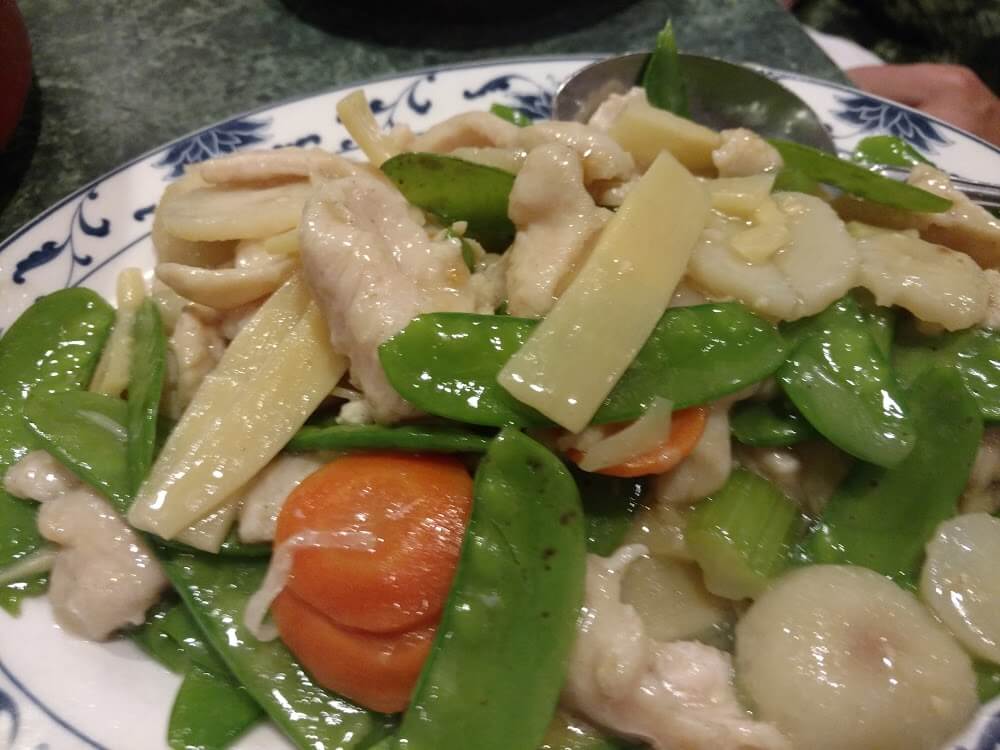
Hong Kong Chinese Food: Exploring Culinary Treasures
Hong Kong, a vibrant metropolis known for its stunning skyline and bustling streets, is also celebrated for its rich culinary heritage. From traditional dim sum to contemporary fusion dishes, Hong Kong Chinese food offers a tantalizing array of flavors and textures that captivate the senses. Let’s delve into the world of Hong Kong’s gastronomic delights and uncover the secrets behind its renowned cuisine.
Table of contents:
- Introduction to Hong Kong Chinese Food
- Overview of Hong Kong cuisine
- Historical significance
- Popular Hong Kong Chinese Dishes
- Dim sum
- Roast meats
- Seafood dishes
- Distinctive Characteristics of Hong Kong Chinese Food
- Fusion of flavors
- Influence of Cantonese cuisine
- Emphasis on freshness and quality
- Iconic Restaurants in Hong Kong
- Tim Ho Wan
- Tsim Chai Kee
- Lung King Heen
- Street Food Culture in Hong Kong
- Dai pai dongs
- Egg waffles
- Fish balls
- Health Benefits of Hong Kong Chinese Cuisine
- Balanced nutrition
- Incorporation of medicinal ingredients
- Low-fat cooking techniques
- Cultural Significance of Food in Hong Kong
- Social gatherings
- Festivals and celebrations
- Symbolism in cuisine
- Challenges Facing Hong Kong Chinese Food
- Rising costs
- Cultural preservation
- Competition from Western fast food
- Innovation in Hong Kong Chinese Food
- Modern twists on traditional dishes
- Culinary creativity
- Sustainable practices
- Tips for Enjoying Hong Kong Chinese Food
- Exploring local markets
- Trying diverse dishes
- Seeking recommendations from locals
- Impact of Tourism on Hong Kong Food Scene
- Global recognition
- Adaptation to international tastes
- Preservation of authenticity
- Future Trends in Hong Kong Chinese Cuisine
- Fusion with other cuisines
- Technological advancements
- Sustainability initiatives
- Conclusion
- Recap of Hong Kong Chinese food’s diversity and significance
- Invitation to experience the culinary delights firsthand
Introduction to Hong Kong Chinese Food
Nestled at the crossroads of Eastern and Western influences, Hong Kong boasts a culinary landscape that reflects its rich history and multicultural identity. From humble street food stalls to upscale dining establishments, the city’s food scene is a testament to its dynamic and ever-evolving nature. Hong Kong Chinese food, characterized by its bold flavors, fresh ingredients, and meticulous preparation, has earned global recognition for its exceptional quality and diversity.
Popular Hong Kong Chinese Dishes
No exploration of Hong Kong Chinese food would be complete without indulging in some of its most iconic dishes. Dim sum, bite-sized delicacies served in bamboo steamers, are a hallmark of Cantonese cuisine and a beloved tradition in Hong Kong. From delicate har gow (shrimp dumplings) to savory siu mai (pork dumplings), dim sum offers a tantalizing array of flavors and textures to delight the senses. Additionally, Hong Kong is renowned for its succulent roast meats, including char siu (barbecue pork) and siu yuk (crispy roast pork), which showcase the city’s mastery of traditional cooking techniques. Seafood also features prominently in Hong Kong’s culinary repertoire, with fresh catches from the surrounding waters transformed into exquisite dishes such as steamed fish with ginger and scallions or Typhoon Shelter crab.
Distinctive Characteristics of Hong Kong Chinese Food
What sets Hong Kong Chinese food apart is its unique blend of flavors and influences. Drawing inspiration from Cantonese, Sichuanese, and Shanghainese cuisines, among others, Hong Kong dishes are renowned for their complexity and depth of flavor. The influence of Cantonese cuisine, with its emphasis on fresh ingredients and subtle seasoning, is particularly evident in many Hong Kong classics. Moreover, Hong Kong’s status as a global city has led to the integration of international ingredients and cooking styles, resulting in a fusion of flavors that is distinctly Hong Kong.
Iconic Restaurants in Hong Kong
For those seeking an unforgettable dining experience, Hong Kong is home to a wealth of acclaimed restaurants. Michelin-starred establishments like Tim Ho Wan, known for its affordable yet delicious dim sum, and Lung King Heen, the world’s first Chinese restaurant to receive three Michelin stars, offer unparalleled culinary excellence. Meanwhile, local favorites such as Tsim Chai Kee, famous for its springy wonton noodles, and Yung Kee, renowned for its succulent roast goose, provide a taste of authentic Hong Kong flavors.
Street Food Culture in Hong Kong
No visit to Hong Kong would be complete without sampling its vibrant street food offerings. From bustling dai pai dongs (open-air food stalls) serving up sizzling stir-fries and aromatic clay pot rice to vendors crafting crispy egg waffles and piping hot fish balls, the city’s streets are a culinary paradise for adventurous food lovers. Whether you’re craving a quick snack or a hearty meal, Hong Kong’s street food scene offers a tantalizing array of options to satisfy every craving.
Health Benefits of Hong Kong Chinese Cuisine
Despite its indulgent reputation, Hong Kong Chinese cuisine offers numerous health benefits. Characterized by its emphasis on fresh, seasonal ingredients and balanced flavors, many traditional dishes are inherently nutritious. Staples such as steamed fish, stir-fried vegetables, and congee (rice porridge) are low in fat and high in essential nutrients, making them ideal choices for health-conscious diners. Furthermore, the incorporation of medicinal ingredients such as Chinese herbs and tonic soups adds an extra layer of health-promoting properties to many dishes, offering both nourishment and wellness benefits.
Cultural Significance of Food in Hong Kong
Food plays a central role in Hong Kong’s rich cultural tapestry, serving as a conduit for social interaction, celebration, and identity. From elaborate banquets celebrating weddings and festivals to simple family meals enjoyed at home, food is intricately woven into the fabric of daily life in Hong Kong. Many traditional dishes carry symbolic significance, representing blessings of prosperity, longevity, and happiness. Moreover, the act of sharing a meal is considered a gesture of hospitality and goodwill, fostering bonds of kinship and camaraderie among friends and family.
Challenges Facing Hong Kong Chinese Food
Despite its enduring popularity, Hong Kong Chinese food faces a number of challenges in the modern era. Economic factors such as rising costs of ingredients and rent pose significant challenges for small-scale eateries and traditional food vendors, many of which struggle to stay afloat in the face of mounting financial pressures. Moreover, concerns about cultural preservation and authenticity loom large in an increasingly globalized and homogenized culinary landscape, as traditional recipes and cooking techniques risk being lost to time and changing tastes. Additionally, competition from Western fast food chains and other international cuisines presents a formidable challenge for traditional Cantonese restaurants, as younger generations increasingly embrace global dining trends over traditional fare.
Innovation in Hong Kong Chinese Food
In response to these challenges, Hong Kong’s culinary scene is undergoing a period of innovation and adaptation. Chefs and restaurateurs are embracing modern twists on traditional dishes, incorporating creative techniques and unexpected flavor combinations to appeal to contemporary tastes. From upscale fine dining establishments to trendy street food stalls, there is a palpable sense of experimentation and creativity permeating the city’s food culture. Moreover, sustainability has emerged as a key focus for many in the industry, with initiatives aimed at reducing food waste, sourcing ethically and locally, and embracing eco-friendly practices gaining momentum. By marrying tradition with innovation and sustainability, Hong Kong’s culinary landscape continues to evolve and thrive in the face of change.
Tips for Enjoying Hong Kong Chinese Food
For those eager to embark on a culinary adventure in Hong Kong, here are a few tips to enhance your dining experience:
- Explore Local Markets: Wander through the bustling stalls of Hong Kong’s markets, such as the iconic Temple Street Night Market or the vibrant Mong Kok street markets, to sample a diverse array of street food and local specialties.
- Try Diverse Dishes: Don’t be afraid to venture beyond familiar favorites and try a variety of dishes, from classic dim sum to innovative fusion creations. Hong Kong’s culinary scene offers something for every palate, so be adventurous and explore new flavors.
- Seek Recommendations: Ask locals for recommendations on the best places to eat and hidden gems off the beaten path. Whether it’s a hole-in-the-wall noodle joint or a family-run dim sum restaurant, locals often know the best spots for authentic and delicious cuisine.
- Embrace the Street Food Culture: Experience the lively atmosphere of Hong Kong’s street food scene by indulging in a meal at a dai pai dong or sampling snacks from street vendors. From savory skewers to sweet treats, the city’s streets are lined with tempting options to satisfy your cravings.
- Dine with a View: For a truly unforgettable dining experience, book a table at one of Hong Kong’s rooftop restaurants or waterfront eateries. Enjoy panoramic views of the city skyline while savoring delicious food and soaking in the vibrant atmosphere.
By following these tips, you’ll be well-equipped to navigate the culinary delights of Hong Kong and savor the flavors of this dynamic city to the fullest.
Impact of Tourism on Hong Kong Food Scene
As a global hub for tourism, Hong Kong’s food scene has experienced significant growth and transformation in recent years. The city’s vibrant culinary landscape has garnered international acclaim, attracting food enthusiasts from around the world eager to sample its diverse offerings. The influx of tourists has not only brought global recognition to Hong Kong’s food culture but has also spurred innovation and adaptation within the industry. Restaurants and food vendors have tailored their menus to cater to international tastes, offering a diverse array of cuisines and flavors to satisfy the city’s multicultural palate. Moreover, the exposure to different culinary traditions and cooking techniques has enriched Hong Kong’s food scene, inspiring chefs to experiment with new ingredients and flavors. While the rise in tourism presents opportunities for growth and exposure, it also poses challenges in terms of preserving the authenticity and integrity of Hong Kong’s culinary heritage. Balancing the demands of an increasingly diverse and discerning international audience with the need to safeguard traditional recipes and cooking techniques is a delicate task, but one that is essential for ensuring the continued vibrancy and relevance of Hong Kong’s food scene.
Future Trends in Hong Kong Chinese Cuisine
Looking ahead, the future of Hong Kong Chinese cuisine promises to be exciting and dynamic, with several trends poised to shape the culinary landscape in the years to come. One notable trend is the continued fusion of Chinese and Western culinary traditions, resulting in innovative dishes that blend the best of both worlds. From contemporary interpretations of classic Cantonese recipes to inventive fusion creations that draw inspiration from global cuisines, Hong Kong chefs are pushing the boundaries of traditional cooking to create bold and exciting new flavors.
Technological advancements are also expected to play a significant role in shaping the future of Hong Kong’s food scene. From online delivery platforms that make it easier than ever to order your favorite dishes to smart kitchen gadgets that streamline the cooking process, technology is revolutionizing the way we eat and experience food. Additionally, sustainability initiatives aimed at reducing food waste, promoting ethical sourcing, and minimizing environmental impact are gaining traction within the industry. From farm-to-table dining experiences to zero-waste cooking practices, Hong Kong’s culinary community is increasingly prioritizing sustainability as a core value.
Overall, the future of Hong Kong Chinese cuisine is bright and full of possibilities. By embracing innovation, sustainability, and the rich culinary traditions of the past, Hong Kong’s chefs and restaurateurs are poised to continue delighting diners and pushing the boundaries of gastronomic excellence for years to come.
Conclusion
In conclusion, Hong Kong Chinese food is a culinary treasure trove that offers a tantalizing blend of tradition, innovation, and flavor. From iconic dishes like dim sum and roast meats to vibrant street food stalls and upscale dining establishments, Hong Kong’s food scene is a testament to the city’s rich cultural heritage and dynamic spirit. By exploring the diverse flavors, embracing the vibrant street food culture, and seeking out hidden gems off the beaten path, visitors can experience the true essence of Hong Kong’s culinary delights. Whether you’re a food lover seeking adventure or simply looking to indulge in some delicious cuisine, Hong Kong has something to offer for every palate. So come hungry, and prepare to embark on a culinary journey like no other in the vibrant and diverse city of Hong Kong.







